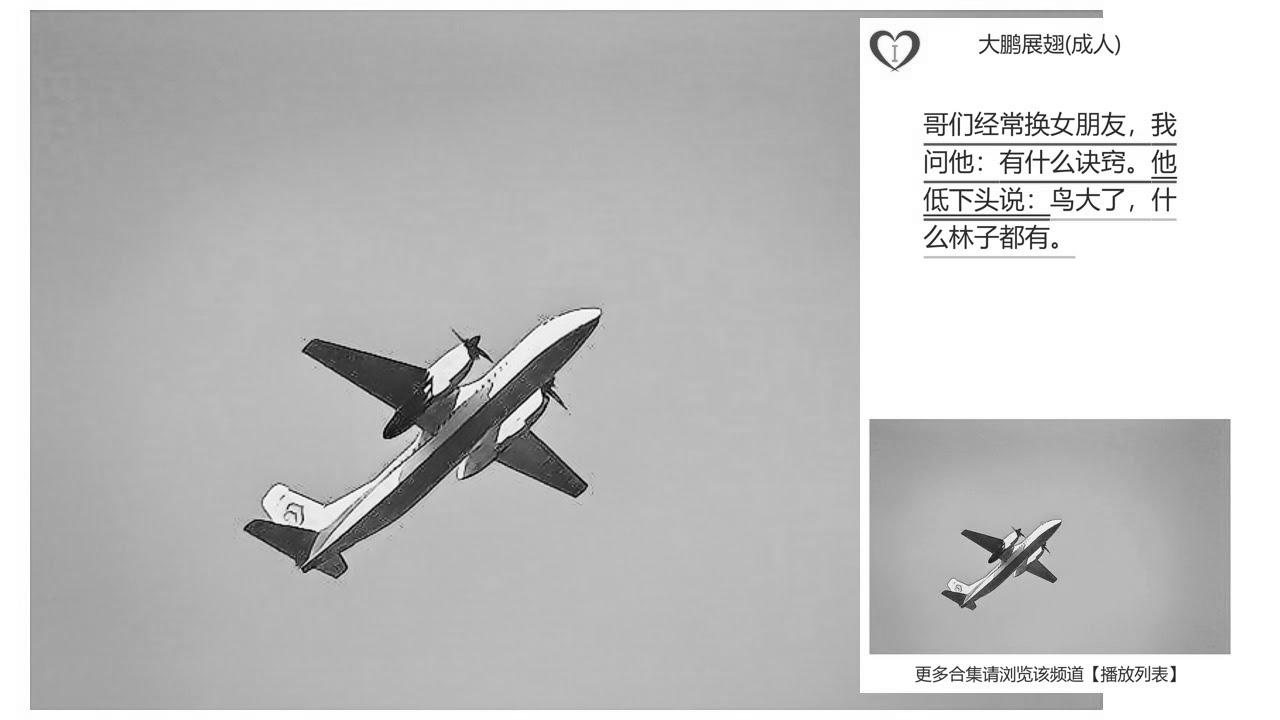Study Chinese in 1 minute easy funny: 大鹏 展翅 (成人) | 笑话 | 学习 中文 游戏化 学习 中文 听 听 有 | 段子 | 声读物 | 学 中文 听 听 | 故事
Warning: Undefined variable $post_id in /home/webpages/lima-city/booktips/wordpress_de-2022-03-17-33f52d/wp-content/themes/fast-press/single.php on line 26

Study , study chinese language in 1 minute easy funny:大鹏展翅(成人)|爆笑|笑话|学习中文|游戏化学习中文|听书|有声书|段子|有声读物|搞笑|学中文|听故事|普通话 , , Ad-WskLXSKQ , https://www.youtube.com/watch?v=Ad-WskLXSKQ , https://i.ytimg.com/vi/Ad-WskLXSKQ/hqdefault.jpg , 1483 , 5.00 , learn chinese language in 1 minute simple humorous:大鹏展翅(成人)|爆笑|笑话|学习中文|游戏化学习中文|听书|有声乬|段子|有声读|物|搇孭渑... , 1657435914 , 2022-07-10 08:51:54 , 00:00:11 , UCijQv4nh16TNcv8PbLA_tqQ , 括号一:笑一笑,有人爱,美梦相伴。 , 8 , , [vid_tags] , https://www.youtubepp.com/watch?v=Ad-WskLXSKQ , [ad_2] , [ad_1] , https://www.youtube.com/watch?v=Advert-WskLXSKQ, #Learn #Chinese #minute #simple #humorous #大鹏 #展翅 #成人 #笑话 #学习 #中文 #游戏化 #学习 #中文 #听 #听 #有 #段子 #声读物 #学 #中文 #听 #听 #故事 [publish_date]
#Learn #Chinese language #minute #straightforward #funny #大鹏 #展翅 #成人 #笑话 #学习 #中文 #游戏化 #学习 #中文 #听 #听 #有 #段子 #声读物 #学 #中文 #听 #听 #故事
be taught chinese in 1 minute straightforward funny:大鹏展翅(成人)|爆笑|笑话|学习中文|游戏化学习中文|听书|有声乬|段子|有声读|物|搇孭渑...
Quelle: [source_domain]
- Mehr zu learn Encyclopedism is the process of getting new apprehension, knowledge, behaviors, skills, belief, attitudes, and preferences.[1] The ability to learn is demoniac by homo, animals, and some machines; there is also testify for some rather encyclopaedism in dependable plants.[2] Some eruditeness is proximate, spontaneous by a unmated event (e.g. being hardened by a hot stove), but much skill and noesis amass from repeated experiences.[3] The changes evoked by learning often last a life, and it is hard to place knowledgeable matter that seems to be "lost" from that which cannot be retrieved.[4] Human education launch at birth (it might even start before[5] in terms of an embryo's need for both interaction with, and immunity inside its situation within the womb.[6]) and continues until death as a result of on-going interactions 'tween friends and their situation. The existence and processes caught up in eruditeness are affected in many established w. C. Fields (including educational psychology, psychology, psychological science, psychological feature sciences, and pedagogy), also as rising william Claude Dukenfield of cognition (e.g. with a common fire in the topic of eruditeness from safety events such as incidents/accidents,[7] or in cooperative encyclopedism well-being systems[8]). Investigating in such fields has led to the designation of individual sorts of education. For instance, eruditeness may occur as a result of habituation, or classical conditioning, operant conditioning or as a effect of more complex activities such as play, seen only in relatively searching animals.[9][10] Encyclopaedism may occur unconsciously or without conscious knowingness. Education that an aversive event can't be avoided or loose may effect in a state known as knowing helplessness.[11] There is inform for human behavioral learning prenatally, in which habituation has been ascertained as early as 32 weeks into construction, indicating that the basic queasy arrangement is sufficiently formed and set for eruditeness and memory to occur very early in development.[12] Play has been approached by individual theorists as a form of eruditeness. Children inquiry with the world, learn the rules, and learn to interact through play. Lev Vygotsky agrees that play is pivotal for children's process, since they make pregnant of their environment through performing educational games. For Vygotsky, however, play is the first form of encyclopedism nomenclature and human activity, and the stage where a child started to understand rules and symbols.[13] This has led to a view that eruditeness in organisms is e'er age-related to semiosis,[14] and often connected with nonrepresentational systems/activity.